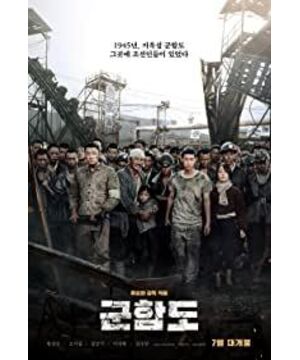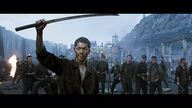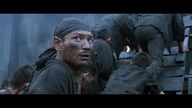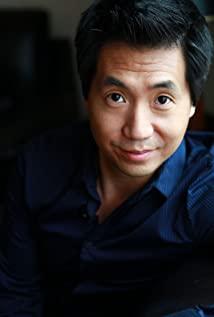The film tells the story of the period when the Korean peninsula became a Japanese colony in 1945. More than 400 Koreans were brought to Warship Island by the Japanese forcibly recruited and lured to engage in forced labor. Men went down to mine coal and women became military prostitutes. In the end, under the leadership of Park Moo-young, a soldier of the Korean Restoration Army, most of the North Koreans fled collectively, and some of them finally managed to escape from Gunkanjima.
As an anti-Japanese film based on historical facts, it did not blindly demonize Japan, but revealed the inferiority of his own nation: Yin Xuezhe, as a big man who could unite the Provisional Government and the National Founding Alliance, was captured by the Japanese army and detained on Warship Island. , became the spiritual leader of the North Korean laborers, responsible for negotiating with the Japanese army for the laborers' interests. Park Wuying accepted the order of the Restoration Society to rescue him, but found that Yin Xuezhe and the Japanese director Shimazaki were in a tangle, embezzling the wages of North Korean workers and occupying pensions, so that none of the North Koreans who wanted to escape succeeded. The labor service team that manages the North Korean laborers is also North Korean. They act as the Japanese thugs, bullying the laborers with sticks, and fighting fiercely. In order to live a relaxed life, Lee Kang-woo, the leader of the Korean Orchestra, knows how to look at people's faces and caters to the Japanese.
"North Koreans are really a mess of sand. They are used to climbing when they are trampled under their feet every day."
I feel that although family, love, and friendship are depicted by depicting several characters, they are all relatively thin, and the forced sensational substitution behind is not strong.
Mining is really hard and dangerous work. In addition to various accidents such as landslides, there is also the danger of gas leakage and explosion.
During the war, I only wanted a bowl of soy milk noodles with sugar; no matter how hard life was in peace, it was still much happier than during war.
Additional historical knowledge:
North Korea and South Korea belong to the same ethnic group and are located on the Korean Peninsula. They were one country in history. In August 1910, North Korea became a Japanese colony. On August 15, 1945, Japan unconditionally surrendered and the Korean peninsula was liberated. The Soviet Union and the United States occupied the DPRK by divisions (the Soviet Union occupied North Korea and the United States occupied South Korea) with the "38th parallel" as the boundary. Soviet troops withdrew at the end of 1948, and U.S. troops withdrew in June 1949. On August 15, 1948, South Korea established the government of the Republic of Korea with Syngman Rhee as its president. On September 9, 1948, North Korea established the Democratic People's Republic of Korea with Kim Il as prime minister.
Gunkanjima, formerly known as Hashima, is located in the sea 4.5 kilometers west of Nagasaki, Japan. After six reclamations and expansions, the island has a length of 480 meters from north to south, about 160 meters from east to west, a circumference of 1200 meters, and a total of 63,000 square meters of land. , its shape resembles the Japanese Navy "Tosa" class warships, so it is also called "Battleship Island". During World War II, thousands of Chinese and North Korean laborers were forced to mine coal here; at the end of World War II, a total of 722 Chinese laborers and 1,442 South Korean laborers were tortured to death.
View more about The Battleship Island reviews











